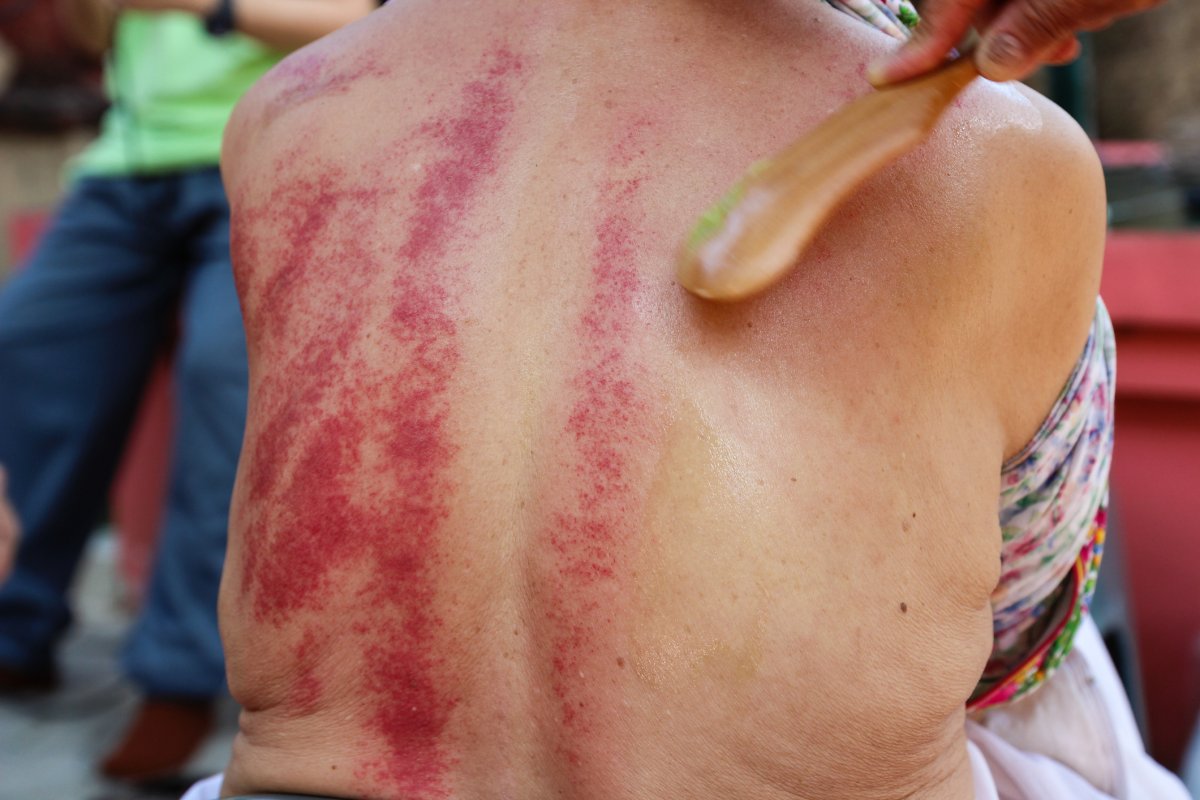Editor’s note: An earlier version of this story incorrectly spelled Sarah Kreitzer’s name. Global News regrets the error.

First there was cupping, now there’s Gua Sha – another form of ancient pain management that’s recently gaining popularity online, and it has many wondering what it is.
Although not new (it is over 2,000 years old), Gua Sha has recently come to light after a U.K. acupuncturist Hitesh Patel revealed photos of the practice on her Facebook page.
READ MORE: Michael Phelps sparks cupping craze, do you now what it is?
The photos show women and men with what appear to be harsh red streaks up and down their backs and thighs, leaving many to wonder if this practice is safe and/or painful.
So what is Gua Sha and what does it do?
Gua Sha is a technique used in ancient East Asian medicine to relieve skeletal muscular pain, registered acupuncturist Sarah Kreitzer says.
The technique – which has been described as a more intense version of cupping – involves scraping the skin with a blunt-edge tool (usually when body oil is applied to reduce the friction). The idea is to flush the tissue with fresh blood to relieve pains such as chronic neck pain, acute back pain, shoulder pain and knots and plantar fasciitis, among other pain-related ailments.
Some also claim it clears toxins and improves inflammation, as well as the immune system, Healthline reports.
“Basically, it’s a soft tissue mobilization therapeutic technique,” Kreitzer says. “Chiropractors and physiotherapists have basically developed their own kind of Gua Sha and they call it the ‘Graston Technique’ but it was based on Gua Sha. It’s really effective for breaking down scar tissue.”
The treatment then leaves temporary reddish-brown marks on the scraped area that can last anywhere between a few days to a week, Kreitzer says. The treatment is not thought to be painful, although there may be some discomfort.
But the treatment isn’t for everybody, registered acupuncturist Eileen Fauster advises, and it may come with some contra-indications afterward.
“If someone is weak – same with cupping, it should never be used on someone who has a deficiency, meaning cancer or Parkinsons for example,” she says. “This is because it does bring a lot of blood flow to the surface, creating that redness. So people who are weak or have thin blood or prone to bruising or people who are on blood thinners, they would not be good candidates for Gua Sha.”
It’s important, both Kreitzer and Fauster say, that these techniques only be performed by a registered acupuncturist or traditional Chinese medicine professional.
Not much is known on Gua Sha and its potential benefits. Very few studies on the subject exist, one of them by Harvard University in 2007.
In the small study, Harvard researchers applied the technique to 11 healthy men and women. Participants reported a decrease in muscle pain on and around the treated site.
READ MORE: Michael Phelps has us asking: Is ‘cupping’ all it’s hyper up to be?
Researchers say Gua Sha increased microcirculation to treated areas and that “there is an unidentified pain-relieving biomechanism association with Gua Sha.”
However, Dr. Robert Glatter, a physician and assistant professor of emergency medicine at Lenox Hill Hospital in New York, says there isn’t any definitive proof that Gua Sha works in alleviating pain.
But he does worry that the practice may increase one’s risk of certain infections, like methicillin-resistant Staphylococcus aureus (MRSA).
“Our concerns are of the potential to transmit blood-borne pathogens because of the way the equipment is used – is it single use or multi-use? Has it been sterilized?” he says. “If they’re not properly sterilized then there’s a risk of infection.”
Glatter says he’s treated a few patients with this issue in the past who have had either MRSA or cellulitis due to aggressive Gua Sha treatments.
And any repeated scraping to the bone and muscle, Glatter says, can cause scarring and local sub-tissue injuries, and can actually lead to pain if it’s not properly done.







Comments